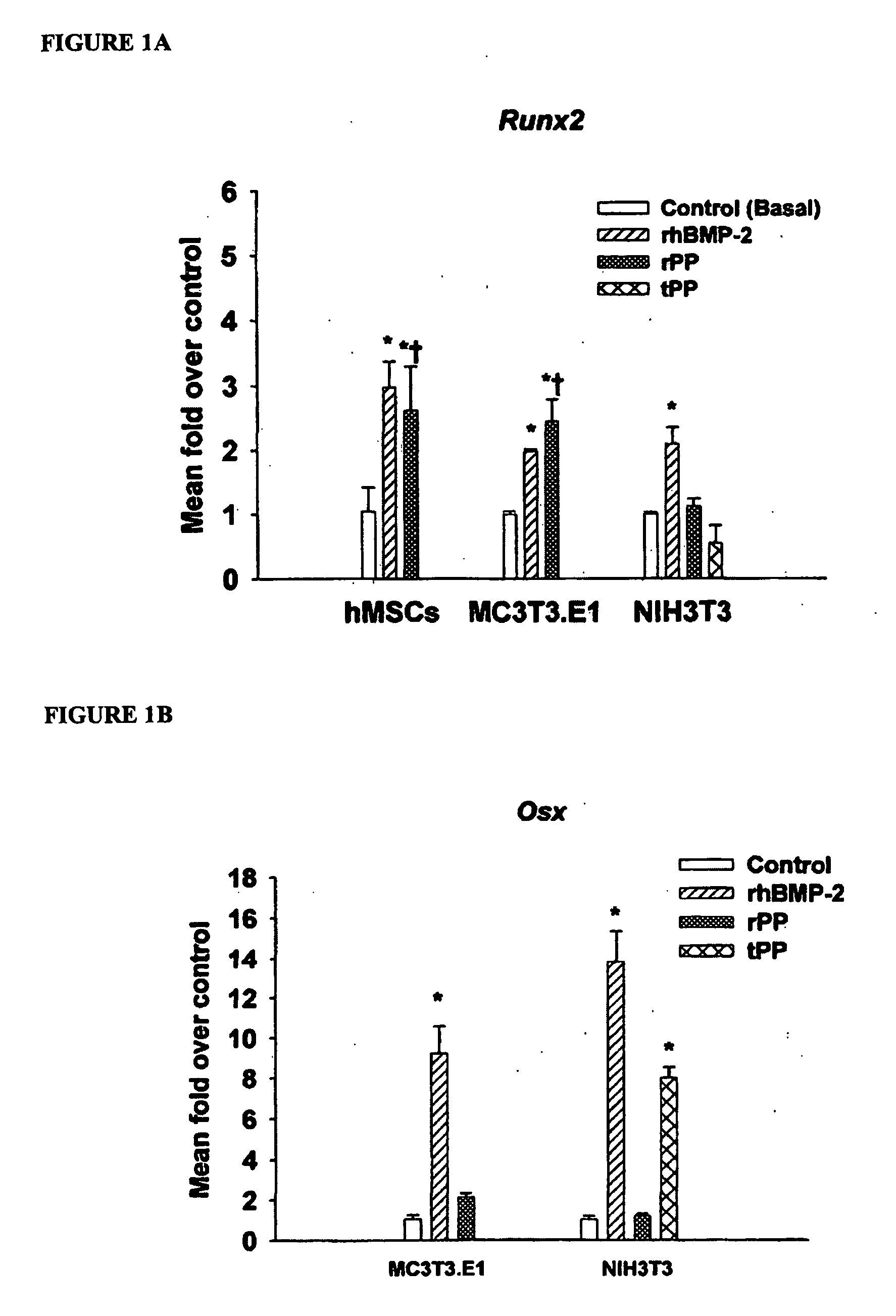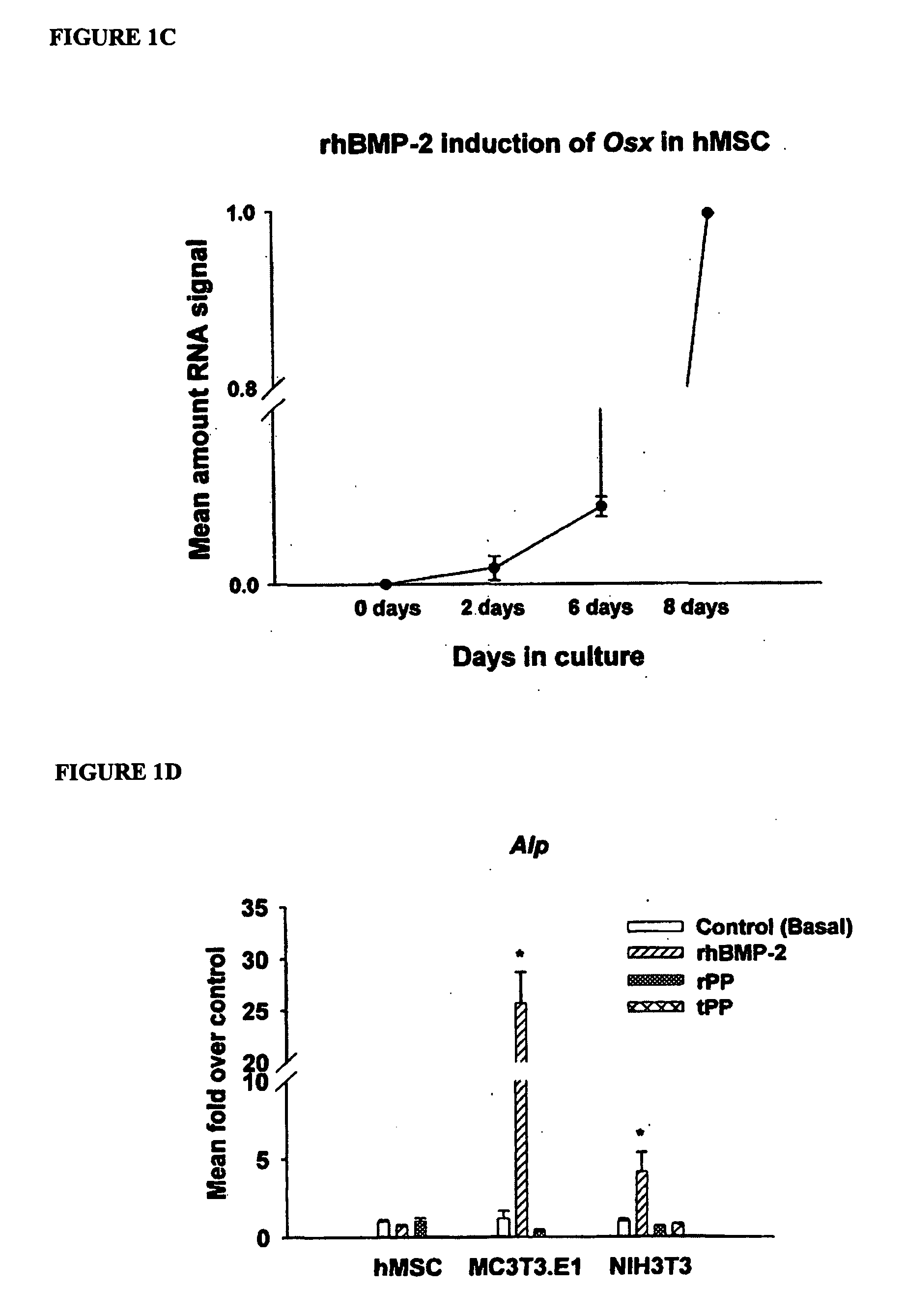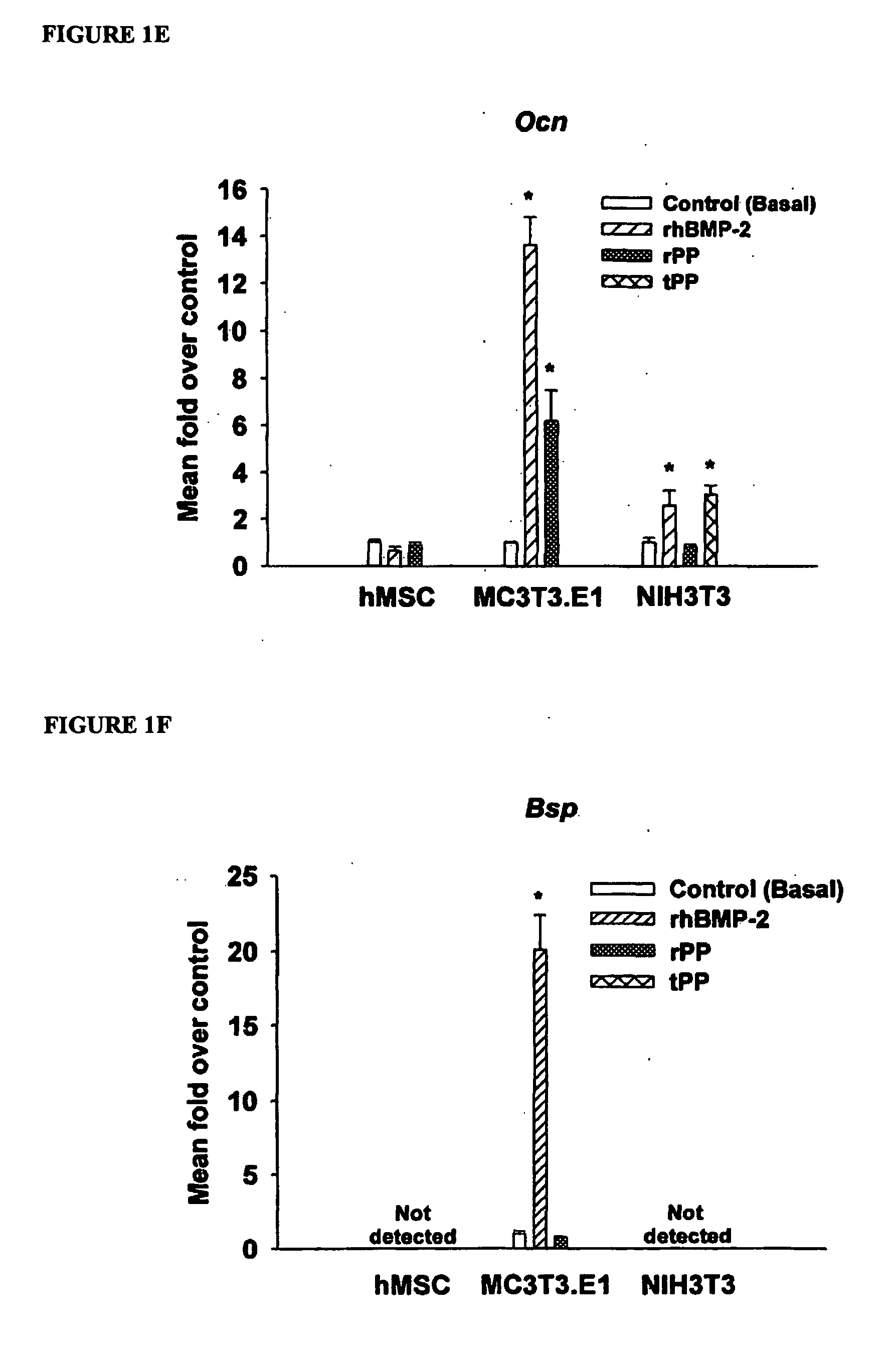Method of inducing biomineralization method of inducing bone regeneration and methods related thereof
a biomineralization and bone regeneration technology, applied in the field of methods of inducing biomineralization, can solve the problems of inability to breach the cementum, loss of protective enamel or cementum covering dentin, and pain experienced by individuals with breached cementum and dentinal hypersensitivity
- Summary
- Abstract
- Description
- Claims
- Application Information
AI Technical Summary
Problems solved by technology
Method used
Image
Examples
example 1
[0117] This example demonstrates the generation of recombinant PP and a transfected cell line.
[0118] Isolated mouse genomic PP was used as a template to amplify by PCR exon 5. The primers used were designed with Sal I and Xba I at the 5′ ends of the gene specific sequence (bold letters). Five random bases 5′ to the restriction site were inserted to allow Sal I and Xba I digestions. The primers used were: Forward: 5′ CTAATGTCGACATGGAGAGTGGCAGCCGTGGAGA 3′ (SEQ ID NO: 12); Reverse: 5′ GCATTCTAGATTAAAGCACCCGCCATTCAAATCG 3′ (SEQ ID NO: 13). The thermocycling conditions were as follows: Three cycles of 94° C. for 70 sec (denaturation), 52° C. for 70 sec (annealing), 72° C. for 2 minutes (extension) followed by 30 cycles of 94° C. for 70 sec (denaturation), 62° C. for 70 sec (annealing), 72° C. for 2 minutes (extension). The obtained PCR fragment was inserted into the pGEX-4T-3 vector and transformed into the bacterial host BL21. Cells were cultured in LB+Amp media for 4 hr at 30° C. Prot...
example 2
[0120] This example demonstrates that Phosphophoryn up-regulates osteoblast marker genes.
[0121] Total RNA was extracted using the RNeasy Kit with DNase I treatment according to the manufacturer's protocol. RNA content was determined using the RiboGreen RNA Quantification Kit. Conventional RNA quantification using 260 / 280 absorbance readings proved to be too imprecise to match the specificity of quantitative real-time PCR. Total RNA content was photometrically analyzed with a Tecan Spectrafluor platereader (Research Triangle Park, N.C.) with excitation at 485 nm and emission at 595 nm. RNA concentrations were calculated based on a standard curve of control ribosomal RNA.
[0122] Cells were harvested from the culture treatments at the time points described above. After extraction and quantification of RNA, quantitative realtime PCR (qPCR) analysis was carried out using Taqman® One-step RT-PCR Master Mix. Total RNA (10-30 ng) was added per 50 μL reaction with sequence specific primers ...
example 3
[0131] This example demonstrates PP induced Ocn gene expression and protein production.
[0132] hMSC were cultured as before for 8 days in basal media or basal media plus 100 ng / mL rhBMP-2 or 50 ng / mL rPP and supplemented with 10 nM 1,25-(OH)2 vitamin D3 for the final 48 hours of culture (Jaiswal et al., J Cell Biochem 64, 295-312 (1997). MC3T3-E1 and NIH3T3 were cultured similarly but did not require vitamin D3 for induction of Ocn. Total RNA was extracted as described above and analyzed via qPCR for Ocn gene expression. For OCN ELISA, cells were cultured in rhBMP-2 or rPP-containing medium for 8 days. For the final 48 hours of culture, cells were cultured in media without serum added. Conditioned media was collected and stored at −80 C until use. OCN ELISA was performed according to the manufacturer's instructions. OCN concentration (ng / mL) was calculated from a standard curve and normalized to total protein of the cell lysate as determined by the Bio-Rad Protein assay.
[0133] PP u...
PUM
| Property | Measurement | Unit |
|---|---|---|
| Composition | aaaaa | aaaaa |
| Ratio | aaaaa | aaaaa |
| Water solubility | aaaaa | aaaaa |
Abstract
Description
Claims
Application Information
 Login to View More
Login to View More - R&D
- Intellectual Property
- Life Sciences
- Materials
- Tech Scout
- Unparalleled Data Quality
- Higher Quality Content
- 60% Fewer Hallucinations
Browse by: Latest US Patents, China's latest patents, Technical Efficacy Thesaurus, Application Domain, Technology Topic, Popular Technical Reports.
© 2025 PatSnap. All rights reserved.Legal|Privacy policy|Modern Slavery Act Transparency Statement|Sitemap|About US| Contact US: help@patsnap.com



